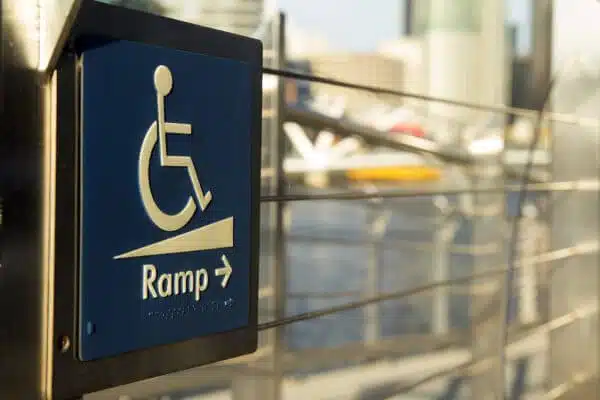Mobility Scooters User Guide – Safety & Operation Tips
Author: Lifeline Canada
Date: 7 October 2020
Are you thinking about getting a mobility scooter? You won’t be sorry!
These are lifestyle-enhancing machines that can help you rediscover a sense of freedom and mobility.
But be warned, purchasing the wrong mobility scooter and using it the wrong way can make you feel more frustrated and trapped than ever. It can even lead to serious injuries, such as falls. And nobody wants that.
So we’re going to make sure you get the absolute most from your purchase, by outlining exactly how to pick out the perfect mobility scooter for your life, and show you how to use it safely.
Part 1: How to Buy The Perfect Mobility Scooter
There is no “best on the market” or one size fits all solution for mobility scooters. You need the right scooter for you and your lifestyle.
So ask yourself the following questions:
Can I Afford This?
This is a big one. These machines are a sizable investment. Have a talk with your doctor and your insurance company to see what’s possible.
You need to know if your insurance will cover a mobility scooter, and how much the policy will cover.
Most often, you need to prove a medical need for it. Speak to your doctor about this.
Am I Physically Able?
It may look easy, and it can be. But before you invest in a mobility scooter, make sure you’re able to sit upright for extended periods of time. This can be an issue with people with bad backs.
You also need to be able to operate the scooter with both hands at all times. One-armed operation isn’t safe. So, make sure that’s not going to be an issue.
Can I Travel (Easily) with This?
Talk to your salesperson or provider about how easily your would-be scooter will travel in cars, buses, or taxis.
You need to know if (and how) it can be transported by car, van or taxi. Maybe it needs to be disassembled to fit in the trunk of a vehicle. Does it come apart and go back together easily? Are the parts too heavy to reasonably lift?
Also, ask if it comes with an anchor that can be used in a taxi or public bus.
You don’t want to have to leave it at home because it’s too big and too bulky to transport anywhere.
How Big is My Home?
If you’re going to use this in your own home, take a good look at all the sharp corners, all of the stairs and the size/layout of your bathroom.
If any of these are too small or cramped to use a mobility scooter, you may consider buying something a bit smaller and more nimble, like a 3-wheel scooter or a motorized wheelchair. They have a tighter turning radius.
Is This Model of Scooter Too Big/Too Small?
Trying out your scooter is extremely important, for size and weight.
You don’t want it to feel too big as it could be difficult to control. At the same time, you don’t want it to feel like it can carry you, but literally nothing else.
When looking at the weight requirements for any given model, don’t just consider your own weight. Also, consider the things you carry on a regular basis like:
- Oxygen tanks
- Laundry baskets
- Shopping bags
Related: How To Choose the Right Medical Alert System For Seniors
Part 2: Learning to Use Your Mobility Scooter
Spend the proper amount of time to get to know your mobility scooter. It’s going to take a bit of practice to get used to the size and operation.
Make sure to practice using it in open spaces, if possible. It’s important you know the speeds so you can always keep it under control. It’s also important to know the turning radius so you can know what corners and turns you can safely navigate when you’re out and about.
The key is keeping your center of gravity right where it should be at all times: in the middle of your seat. This is what keeps you from leaning too far to the left, right, front or back. Tipping over can cause serious injuries.
Leaning one way or another without paying attention can also lead you to accidentally engaging the throttle and taking off unexpectedly. This is obviously dangerous to yourself and anyone around you.
When the scooter is engaged (ie. you’re the one steering and controlling the speed), there are two different modes you should be aware of:
Freewheel Mode
This allows for manual maneuverability by you or a trained attendant. To make it easier to push and guide, the braking system is disengaged.
When it’s in freewheel mode, it’s important to remember:
- Put it back in drive mode to lock the brakes before leaving the scooter unattended or when you’re giving control of the scooter back to the driver
- Never put it in freewheel mode while on an incline or decline
- Never put it in freewheel mode without someone present who can assume control and keep it from rolling
Push-Too-Fast Mode
Your scooter may also have a push-too-fast mode. This is operated when you’ve got the scooter set to Freewheel mode and it does exactly what it sounds like. It keeps the scooter from picking up too much speed or operating dangerously out of control.
This is designed for your safety and to keep the mobility scooter from operating outside of what it was meant for.
Related: Complete Guide To Caring For An Elderly Parent
Part 3: Using Your Mobility Scooter on Streets and Sidewalks
Chances are good that you’re getting a mobility scooter so you can use it outside. People love mobility scooters because they help people to carry out their day-to-day tasks, or just get outside and enjoy life.
But there are a few bumps in the road, figuratively and literally. You’re going to encounter things like:
- Uneven or gritty surfaces
- Ramps
- Inclines
- Sidewalks
- Steps
- Curbs
These may all seem a bit intimidating at first, or even dangerous. But we’re going to provide tips to help you safely and easily navigate these things.
A few quick rules of thumb. You will want to avoid driving on:
- Any sort of water, or near the edge of a lake, river, ocean or canal
- Uneven terrain and/or soft surfaces
- Tall grass
- Loose gravel and sand
- Near railroad tracks or crossings
- Anywhere where you are not comfortable
Driving on Ramps and Inclines
A lot of cities and states have strict regulations when it comes to building accessibility ramps; but these ramps aren’t regulated everywhere. So you may encounter ramps and inclines of all shapes and sizes out there. Some will be man-made, and some will occur naturally.

You may not be worried about the ramp itself. You may be worried about the “switchback”. These are the 180 degree turns in the middle of a ramp or incline that requires you to switch back in the opposite direction and keep climbing. They can be tight and intimidating.
Switchbacks may take a bit of practice. So the more comfortable you are with your mobility scooter’s cornering abilities before you arrive at a switchback, the better.
Remember:
- Proceed with caution
- Keep the speed low
- Take the turn as wide as possible with the front wheels, so the rear wheels can follow suit
Driving Uphill:
First and foremost, your scooter has maximum performance specifications that will tell you exactly how steep of a slope this machine can, and can’t, handle. You need to know these limitations and keep them in mind at all times. Next, always remember to lean forward when going uphill. This keeps your center of gravity in the front of the scooter, which will keep you stable.
Also drive as straight as possible, as any sharp turns or zigzagging may cause you to lose balance, tip or fall. Never attempt a hill with your seat in the reclined position. This can also lead to tipping or a dangerous fall.
Driving Downhill:
Again, always drive in as much of a straight a line as the terrain will allow. Too much movement from side to side can cause a fall.
Always approach a decline at the slowest possible speed, to keep things safe. If you find yourself approaching a speed that you’re not comfortable with, release the throttle and let it come to a complete stop before starting up again.
Streets and Sidewalks
This may seem stressful at first. But after just a little bit of practice and consideration, you will be able to navigate even the busiest streets and sidewalks.
Here are some things to remember:
- Always obey all pedestrian signs.
- Remain aware and courteous to all other pedestrians, and they will return the favour. For example, slow your speed and give an audible and polite signal before passing fellow pedestrians on sidewalks.
- Your mobility scooter is designed for sidewalks and walking/ bicycle paths. It is not designed for busy roads or public streets, so avoid these as much as possible.
- Use safety equipment such as reflectors/reflective clothing, lights, and safety flags to keep yourself visible.
Steps and Curbs
Your mobility scooter manual will tell you exactly how big or steep of a curb/step that your machine can safely hop up. You need to know this range, and try to never exceed it. This can cause a lack of control or a bad fall.
We recommend that you avoid curbs that are 2 in. (5 cm) high, even if your mobility scooter can handle it. These bigger bumps can cause dangerous falls.
Here’s how to handle one:
- Approach the curb or obstacle straight-on (no angle)
- Slow your forward speed just before your front wheels touch the obstacle
- Bring your speed back up as the rear wheels have cleared the obstacle
What if I Fall Out of My Mobility Scooter?
These vehicles can help you regain a lost sense of mobility, but they can also be dangerous if they tip or fall. So you should always treat these machines with respect, and be prepared.
Investing in a medical alert system may also help you feel more confident. Knowing help is never more than the press of a button away enables seniors to live more independently and affords you peace of mind.
With a fall alert system , help can be just a button push away!
What You Should Do Now:
Here are 5 ways we can help you or your loved one live safer and more independently at home as long as possible:
- Get our latest tips, tools and resources straight to your inbox. Sign up for our monthly newsletter.
- Not sure if the time is right for a medical alert service? Take this quick assessment to find out.
- If you would like to learn how to live a healthier and safer lifestyle, go to our blog or visit our resources section, where you can read and download guides.
- Wondering which medical alert system company is the best for your needs? We’ve put together a guide comparing the best medical alert systems for you.
